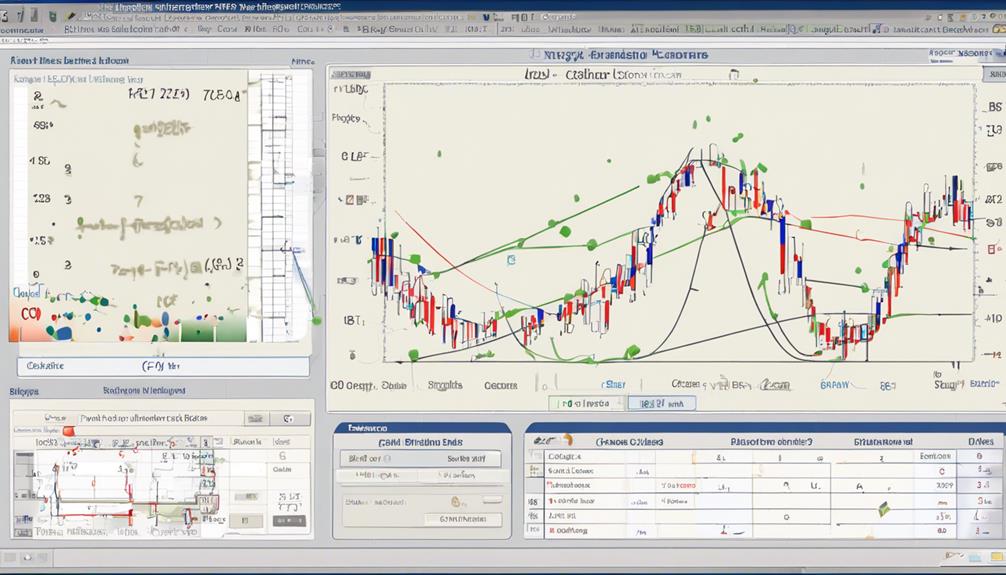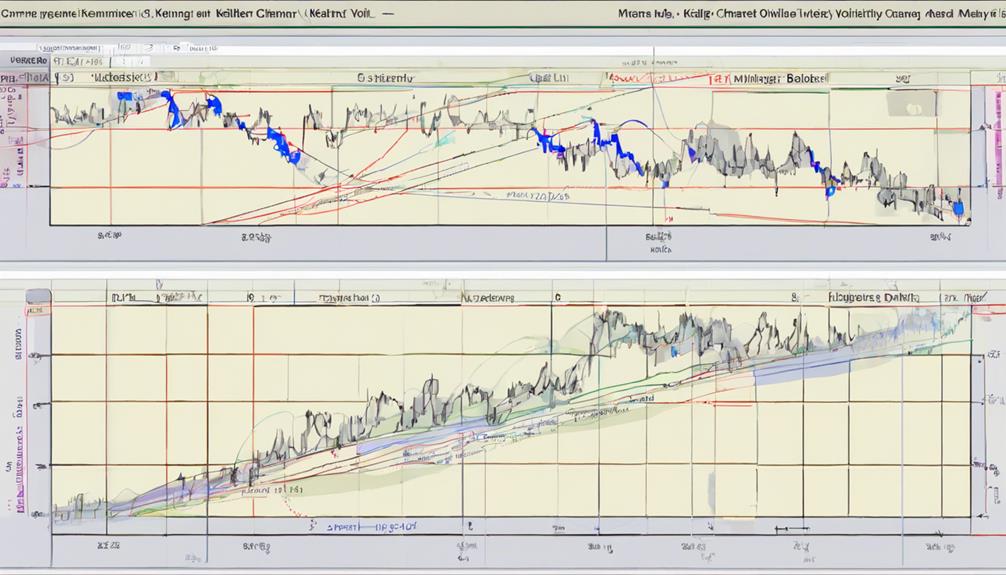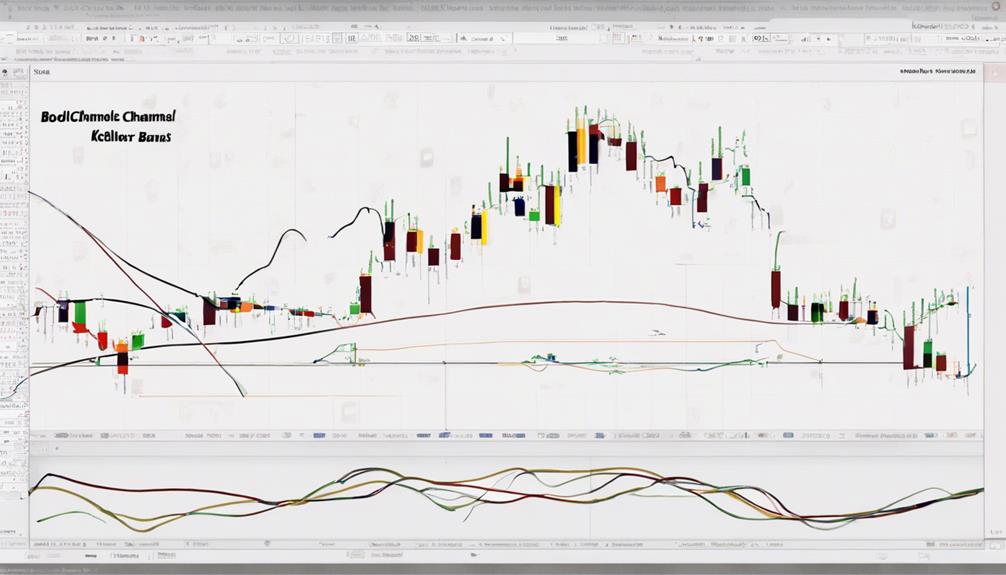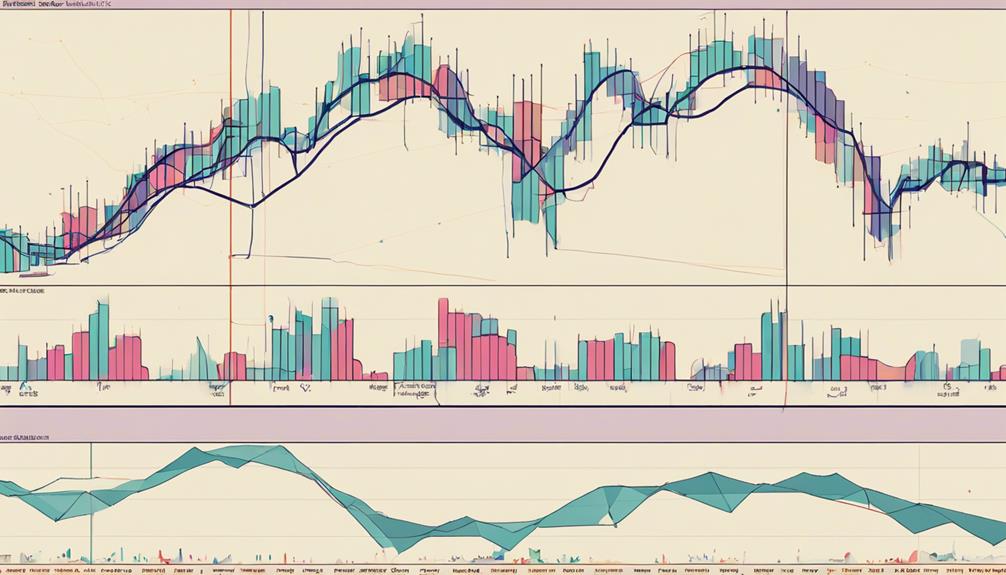When considering the decision between Keltner Channels and Bollinger Bands, understanding the nuances of each indicator is crucial to making an informed choice.
The distinctive methods employed by these two tools in calculating volatility and reacting to market fluctuations can significantly impact trading strategies.
By exploring the rationale behind opting for Keltner Channels over Bollinger Bands, investors may uncover insights that could potentially refine their approach to technical analysis and improve decision-making processes in the dynamic realm of financial markets.
Keltner Channels Vs Bollinger Bands: Overview
When comparing Keltner Channels and Bollinger Bands, it becomes evident that the choice between the two technical indicators hinges on distinct methodologies and their implications for trading strategies. Keltner Channels utilize the Average True Range (ATR) to determine the width of the outer bands, while Bollinger Bands rely on standard deviation. Additionally, the middle line in Keltner Channels is based on a 20-day exponential moving average, contrasting with Bollinger Bands that use a 20-day simple moving average.
One key difference lies in their sensitivity to price changes. Keltner Channels are less reactive to sudden price fluctuations, making them more suitable for investors with longer investment horizons. On the other hand, Bollinger Bands adjust more quickly to market volatility, rendering them more appropriate for short-term trading strategies. Therefore, the decision to choose between Keltner Channels and Bollinger Bands is contingent on individual trading goals, prevailing market conditions, and preferred investment style.
Calculation Differences Between the Channels

The distinct methodologies used in calculating Keltner Channels and Bollinger Bands highlight significant differences in their approach to determining price volatility and trend indicators.
Keltner Channels rely on the Average True Range (ATR) indicator to establish the upper and lower channels, providing a direct reflection of price volatility. In contrast, Bollinger Bands use standard deviation from a simple moving average to calculate the outer bands, offering a different perspective on volatility.
Another key variance is the moving average type used for the centerline – Keltner Channels utilize an exponential moving average, while Bollinger Bands employ a simple moving average.
Traders need to consider their preference for volatility measurement and moving average methodology when choosing between these two indicators, as these differences can impact how price action and trend signals are interpreted within the upper and lower channels of each indicator.
Volatility Measurement in Channel Indicators

Utilizing distinct methods for measuring volatility, Keltner Channels and Bollinger Bands offer traders varying perspectives on price fluctuations and trend indicators.
Keltner Channels utilize the Average True Range (ATR) indicator for volatility measurement, providing a more dynamic view of price movements compared to Bollinger Bands, which rely on standard deviation.
The ATR in Keltner Channels excels at capturing short-term price changes, making it particularly suitable for traders engaged in intraday trading and those focusing on shorter time frames.
In contrast, Bollinger Bands may offer smoother band movements but could be less responsive to rapid price fluctuations due to their standard deviation-based volatility measurement.
Traders seeking a more reactive indicator that swiftly reflects abrupt price changes may find Keltner Channels better aligned with their trading strategies.
Understanding the differences in volatility measurement methods between these two indicators is crucial for traders to select the one that best suits their trading style and objectives.
Trading Strategies: Keltner Channels Vs Bollinger Bands

Comparing the effectiveness of trading strategies using Keltner Channels and Bollinger Bands reveals distinct advantages in volatility analysis and trend identification. When deciding between the two indicators, traders should consider various factors:
- Volatility Calculation: Keltner Channels utilize the Average True Range (ATR) for setting the outer bands, offering a more precise reflection of price volatility compared to Bollinger Bands.
- Suitability for Trading Horizons: Bollinger Bands are more sensitive to market conditions, making them better suited for short-term trading, whereas Keltner Channels are ideal for longer investment horizons due to their smoother representation of price range.
- Trend Identification: Both indicators can help identify trends, signal new trends, and indicate potential trend reversals. However, Keltner Channels use a different volatility calculation method, which may be preferred in certain market conditions.
- Noise Filtering and Signal Clarity: Traders often choose Keltner Channels over Bollinger Bands for their ability to filter out market noise in choppy conditions, providing clearer buy and sell signals within narrow price channels.
Which Indicator to Choose for Trading?

When deciding between Keltner Channels and Bollinger Bands for trading, careful consideration of market conditions and individual trading objectives is paramount. Keltner Channels utilize the Average True Range (ATR) for volatility calculation, offering a unique approach compared to Bollinger Bands. Traders with longer investment horizons may lean towards Keltner Channels for trend confirmation and reversal signals, as they are less sensitive to sudden price changes, resulting in smoother trend analysis.
The choice between these indicators should align closely with one's trading goals, risk tolerance, and preferred style. If seeking a more stable and gradual trend analysis, Keltner Channels could be the preferred option. Conversely, if a trader values a more responsive indicator to capture short-term price fluctuations, Bollinger Bands might be more suitable.
Ultimately, understanding the nuances of each indicator and how they align with personal trading objectives is critical in making an informed decision.
How Do Keltner Channels Compare to Other Trend Following Indicators, Such as Bollinger Bands?
When it comes to the best trend following indicators, Keltner Channels and Bollinger Bands are both popular choices. While Bollinger Bands focus on price volatility, Keltner Channels consider price momentum. Traders often use both indicators together to gain a more comprehensive understanding of the market trends.
Frequently Asked Questions
Which Is Better Keltner Channel or Bollinger Bands?
When comparing Keltner Channels and Bollinger Bands, consider factors like volatility measurement method, moving average type, and sensitivity to price fluctuations. The choice hinges on trading goals, time horizon, and risk tolerance, tailored to individual preferences.
What Is the Purpose of the Keltner Channel?
The purpose of the Keltner Channel is to provide a more accurate representation of price range width by incorporating the Average True Range (ATR) indicator. This aids in tracking price movements closely and identifying short-term price shifts.
What Is the Disadvantage of Bollinger Band?
One notable disadvantage of Bollinger Bands is their susceptibility to generating false signals during volatile or choppy market conditions. This sensitivity to price volatility may lead to inaccurate trading decisions, impacting overall strategy effectiveness.
Which Indicator Works Best With Keltner Channel?
Pair the Keltner Channels with the Relative Strength Index (RSI) for confirming overbought or oversold conditions. This combination enhances signal accuracy and aids in making informed trading decisions based on both price movements and strength levels.
Conclusion
In conclusion, when deciding between Keltner Channels and Bollinger Bands, it is essential to consider the differences in volatility calculation methods and responsiveness to price changes.
While Keltner Channels may be better suited for longer-term strategies due to their use of the Average True Range, Bollinger Bands could be more appropriate for short-term trading with their reliance on standard deviation.
Ultimately, the choice between the two indicators should be based on one's trading goals and risk tolerance. For example, a trader looking to capitalize on short-term price fluctuations may find Bollinger Bands more effective, while an investor focused on long-term trends may prefer Keltner Channels.
